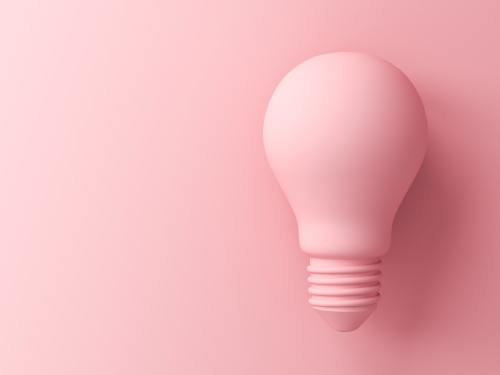
How to use your imagination to make a dramatic difference to your health, happiness and vibrant youthfulness
I wanted to share some really important information with you that is often overlooked in the medical field – or consigned to the ‘woo-woo’ bin as being just too ‘off the wall’ to be taken seriously. It is the process of visualisation, or mental imagery, that we can harness to achieve our wellness aims.
Now – to clear up a common misunderstanding from the outset, ‘visualisation’ is a process whereby we imagine a situation that we desire – and it many people think that in order for this to work you must be able to ‘see’ the situation in your mind’s eye. This isn’t the case at all, we are all wired differently, so whereas my imagination does work visually and I find it quite easy to hold an image in my imagination, other people may find that sounds, smells, the sense of touch etc. are more real and relevant to them. So, when I speak of ‘visualisation’ please accept this as a shorthand term which essentially means that we vividly imagine a set of desired circumstances in the way that is most relevant and meaningful to us, individually. So, don’t worry if you are not the kind of person who ‘sees’ things in your mind’s eye – you may have a different kind of dominant sense. Furthermore, given that we have five principal senses, when you are performing any of the exercises I suggest, try to incorporate as many of your senses into your imagery as you can – the more you can incorporate, the stronger – and more real to your brain – the imagery is.
My Experience of Positive Visualisation
To begin, I want to share a part of my story with you to show that, even in the worst situations, we can harness the power of our minds to gain strength, heal and potentially get better.
I have the auto-immune condition Rheumatoid Arthritis and although I am in full remission now, I did get extremely ill. After struggling with the condition for some years and being a full-time wheelchair user, things really came to a head 18 years ago, when I was told to ‘get my affairs in order’ as my doctors predicted that I only had a couple of weeks to live as I had developed a life-threatening flare up of the condition. The inflammation was raging out of control and everything was inflamed and agonisingly painful; joints, brain, liver, kidneys, lungs – the lot! Within just a few days after the onset of the flare-up, my weight plummeted to 5.5 stone as my body was using my muscle tissue for fuel. In fact, my muscle wastage was so extreme that my brain totally “forgot” how to move my body and I was locked, immobile, into an excruciating foetal position. The outlook was grim, and the only conventional medication offered to me was chemotherapy (Methotrexate) to suppress my immune system and hopefully give me some relief from this relentless attack. I knew enough about my own body to realize that being so gravely ill and underweight, putting a highly toxic drug into my system was probably not the cleverest idea. I did some soul searching and worked out that I needed to somehow pay more attention to the mind–body connection. Given that I had no muscle left to speak of, I realised I had to harness my mind to “communicate” more positively with my body, so that I could encourage my immune system to calm down and stop attacking me. I decided to play ballet music and simply imagine myself dancing, given that I couldn’t do it physically. Dancing was something I could relate to on every level, having previously been a professional dancer. As I started this, I became determined to not just live, but to really get better and thrive. And the key is that I totally believed that this would be achievable. Of course, I also made sure that all other aspects of my lifestyle were supporting the positive visualisation, including optimal nutrition, creating a strong gratitude practice, meditation and stress-response management. Gradually, I started to get better: initially, the pain and inflammation subsided; then a few muscle fibres started twitching; and, eventually, I managed to regain full use of my body!
Visualisation – in research
In one of my favourite studies, researchers measured strength improvements in three different groups of people: Group 1 continued with their normal daily routine as before; Group 2 did two weeks of highly focused strength training for one specific muscle, three times a week; and the Group 3 listened to recordings that helped them to imagine doing the same workout as the exercising group three times a week – but they did no physical exercise. The results were astonishing: predictably, the Group 1 saw no improvement in strength; Group 2 saw a 28 per cent gain in strength; but Group 3 who only visualised exercising, experienced nearly the same gains in strength as the exercise group, at 24 per cent!
In a Harvard study, housekeeping staff in a major hotel were told that the work they did on a daily basis equalled the amount of exercise needed to be fit and healthy. They made no changes in behaviour; they just kept on doing their job with this new belief in place. Four weeks later, the housekeepers had lost weight, lowered their blood pressure, had improved body-fat percentage, developed a healthier waist–hip ratio and a better BMI. A similar group of housekeepers (the control group) who had not been led to believe their job qualified as exercise saw none of these changes.
All in all, then, the power of the mind is really pretty incredible. So much so that many top sports people use visualisation techniques to mentally rehearse their events before they compete with great success. Of course, this doesn’t mean for one minute that visualisation is all you should do. However, it is particularly useful to incorporate positive visualisation techniques into the recovery programme of anyone who is
injured or immobilised. And positive visualisation is also extremely helpful at any time for fit and healthy people who simply want a boost to their efforts.
How to incorporate visualisation to improve health, happiness and overall wellbeing
When using visualisation to improve health and performance, it’s vital that you choose your own imagery that you really relate to and have the most positive associations with. Consider what the most effective visualisation for you might be, given your current circumstances. What would you most like to achieve from using visualisation? For example, more strength? More mobility? More positivity? More energy? Or something other than these? Then set aside some regular time to imagine yourself doing an activity that would help you to achieve your aims.




This is brilliant Jayney thank you
Thank you so much Norah. Jayney xx